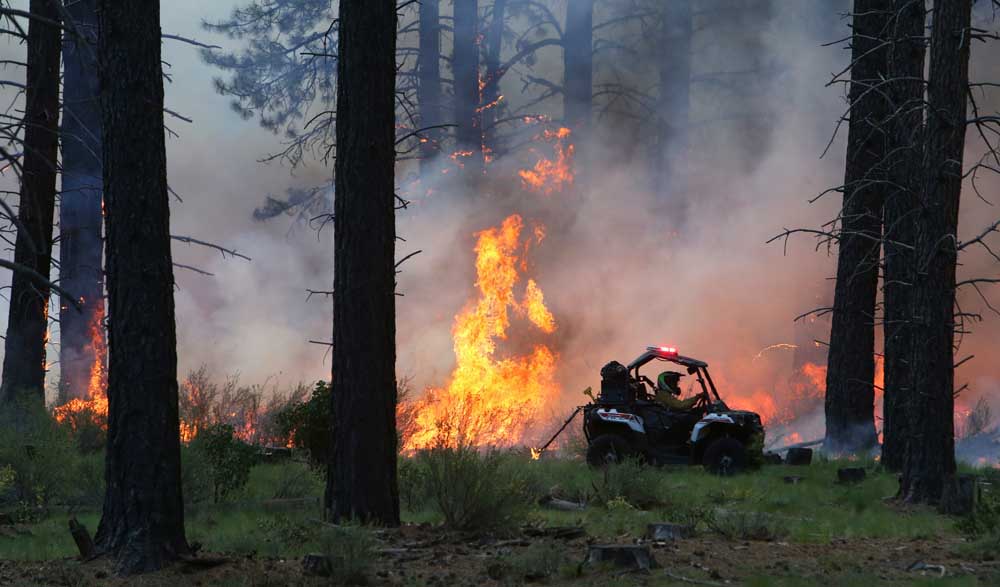Editorial: Getting Oregon to less smoky summers
Published 5:00 am Saturday, January 4, 2025

- Smoke billows up as a U.S. Forest Service employee drives a quad fitted with a drip torch in April 2024.
Oregon’s summers have become smokier, a quality to the air nobody much wants.
Go back to 1989 through 2016. Bend only had 10 days when the air was unhealthy for sensitive groups from wildfire smoke. From 2017 to 2022, Bend jumped to 58 days. And in 2020, Bend had hazardous air quality levels for the first time.
Oregon’s Environmental Quality Commission is going to be taking a closer look next week at wildfire smoke in Bend. The plan is to use a large series of prescribed burns near Bend as a way to look at reducing smoke. There’s a report, the West Bend Prescribed Fire Pilot After Action Review. The Smoke Center, a center for wildfire smoke research at the University of Oregon, did the report.
Some things with the West Bend burn went right. Some things went less right. It may have been a step forward, but replicating it elsewhere in Oregon or in other parts of the country may be difficult.
Federal, state and local officials worked together last spring to do the burn. A total of 1,864 acres were subjected to prescribed fire. That is about a sevenfold increase in acreage over what had been typically done. There was ramped up air monitoring.
The West Bend burn demonstrated that multiple agencies working together could pull off a bigger prescribed burn than just the Forest Service working on its own. It’s a notable achievement. As for room for improvement, The Smoke Center report pointed out metrics for success weren’t established in advance, so it was hard to measure success. There was some miscommunication and confusion about roles with so many agencies working together.
Despite efforts to inform the public about the burn, many people were still unaware it was happening. Sunriver and La Pine ended up getting most of the smoke. The efforts to inform the public there were not as extensive as they were in Bend.
The Smoke Center report suggested it might be smart to shift communication efforts from episodic bursts just before and during burns to more of a year-round expectation that there will be smoke from wildfire and prescribed fire.
This burn may not be the best example to easily transfer, larger prescribed burns to other communities. In Central Oregon, various government agencies already do much work together on wildfires and prescribed burns. There has been so much community engagement work. Not every community has that level of groundwork in place.
They won’t get it, though, unless they try.
Wildfire smoke is a serious public health issue. More prescribed burns won’t stop wildfires. They won’t stop the smoke. They won’t stop intense blazes driven by high winds. Prescribed burns must be paired with more indoor air filtration, home hardening and smart landscaping.
More smoky days are coming. It would be better if more of them were from controlled fire.






